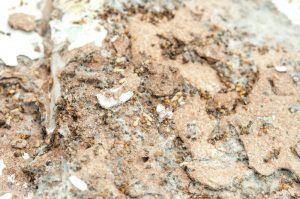
Termites. The very word inspires a degree of trepidation in any home owner or soon to be home owner, as their crawling little bodies regularly wreak havoc on many Queensland homes. More than just a “bug problem” a termite infestation can drive down the value of your home, cause expensive damage and render your foundations unsafe in a matter of months. Nipping them in the bud now will minimise the repair bill at the end of the day, but how do you spot a warning sign when it’s right in front of you? Do you know what to look for? Take our top five warning signs you have a termite problem now and guard your home (or business) against these microscopic pests.
Flimsy Wood, Degraded Timber or Strange Hollows
Uncovering a termite problem can be as easy as knocking on wood – a good thunk-thunk will reveal odd cases of hollowing, as solid wood carries a different sound. If the wood or timber appears weak and has started to cave in, save your knocking for somewhere else – cave-in’s are a clear sign of termite activity as these little critters devour fibres from the inside. Be diligent in spotting cracks and splits near window sills and ceiling corners, as these areas are hot spots for undetected termite activity.
Soil and Dirt Piles
If small dirt piles have suddenly appeared along your wood work, these are termite toilets in the making. Some types of termite small out take areas to dispose of their personal waste and inedible material from your wooden structure.
Voices in the Walls
Or more specifically, the soft crunch, crunch, crunching of your home being devoured by thousands of hungry termites. The occasional soft tap probably isn’t your imagination; you’ve just caught the tail-end of a termite conversation as they drive their heads into tunnel walls, warning of danger or a particularly tasty spot.
Little Wings Everywhere
Heavy (and costly) termite activity can results in random scatterings of tiny wings, where termites have shed their skins and flying bits, beginning anew in a bigger body. They’re commonly shaped like a tear drop and carry a termite dust. Don’t leave them lying around, but clean up and call somebody who can confirm your suspicions.
Mud Tubes
Termites are resourceful – they can use fire and wood chips, loose soil, dirt and other natural products to create a super highways of mud tubes along the walls of your home, connecting the hard working termites with their food source. While most of these will lead outside, be aware termites can also further cannibalise parts of your home (the kitchen or bathroom) to provide further food supplies.
If you notice even one danger sign, call a reliable Bennetts Brisbane pest control specialist. They will be able to confirm even the smallest termite infestations, direct you to possible danger zones and give you inside tips to keep your home safe in the future.

